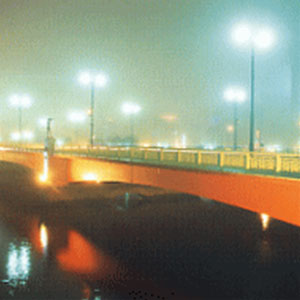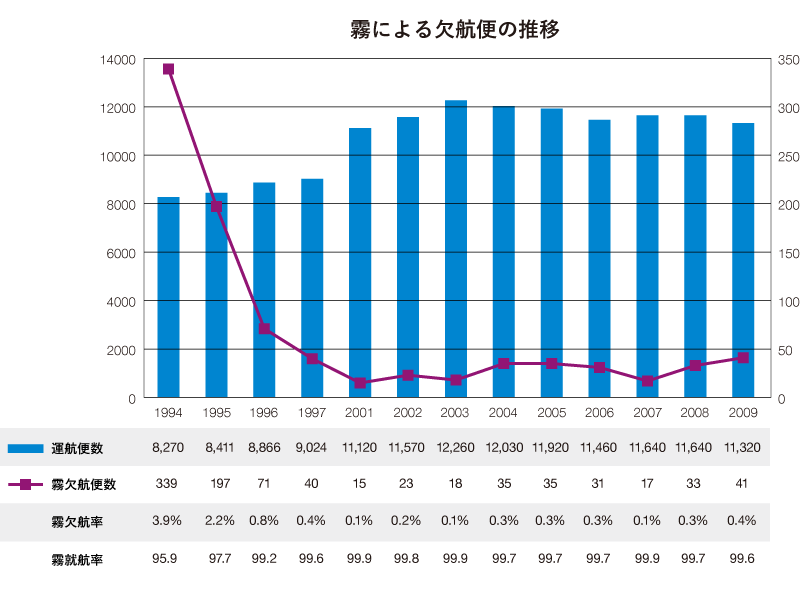Measures against fog
Why is there so much fog at Kushiro Airport?

Fog is a type of cloud. It is divided into various types depending on the influence of temperature and water vapor. The fog that occurs frequently at Kushiro Airport is caused by the temperature difference when warm, humid air comes into contact with the sea surface and is cooled. This type of fog is called "sea fog." This "sea fog" can occur regardless of the season, but tends to occur more frequently from early spring to summer.
When the hot and humid Ogasawara air mass moves north, it encounters the cold Kuril Current. The difference in temperature causes fog to form on the ocean surface, which then moves inland at night when the land temperature is low.
This phenomenon is often seen off the coast of Sanriku and in the Pacific Ocean off Hokkaido. Kushiro Airport is located about 6 km from the coastline, close to the sea, on a small hill about 90 meters above sea level, and on the eastern side in a low marshland that is part of Kushiro, so it is particularly affected by this phenomenon.
High category ILS and its performance
ILS (Instrument Landing System) is a system that guides an aircraft to a safe runway when visibility is poor.
In addition, the category (CAT) indicates the rank of the technical level, and is broadly divided into three categories.
The higher the category (the larger the number), the higher the safety and continuity of the system, and CAT-II, CAT-IIIa, b, and c are called high-category ILS.
| Category | Landing minimum | |
|---|---|---|
| Decisive High (DH) | Runway Visual Range (RVR) | |
| Ⅰ | Over 60m | Over 550m |
| II | Over 30m | Over 350m |
| IIIa | Not set | Over 200m |
| IIIb | Not set | Over 100m |
| Ⅲc | Not set | 0m or more |
At Tancho Kushiro Airport, which is often affected by fog, there were limitations to conventional CAT-I operations. This was because, as shown in the table above, the minimum weather conditions for landing were set at a decision height of 60m or more and a runway visual distance of 600m or more, and it was difficult for aircraft to land unless these weather conditions were met.
However, by starting to operate under CAT-IIIa, the minimum weather conditions for landing have improved significantly. Furthermore, since 2006, we have been operating under CAT-IIIb, which is one level higher (some aircraft may not be compatible). This allows us to expect a high flight rate, but it is also necessary that all of the compatible on-board and ground equipment functions reliably.
CAT-Ⅲ Operation
In order to carry out CAT-Ⅲ operations, the following four main elements must all be met:
1. Ground Facilities
First of all, there is the ground facility. Ground facilities for CAT-III must be prepared.
2. On-board equipment
Next is the on-board equipment. The aircraft must be equipped with CAT-III on-board equipment.
3. Aircrew Training and Examination
Even if the ground facilities and on-board equipment are in place, CAT-III operation is not yet possible. Crew training and inspection are required.
4. Flight Procedures
The last thing is the operating procedure. If the CAT-III operating procedure is not set, CAT-III operation is not possible.
Benefits of Category IIIa approach
The graph below shows the changes in service status from 1994 to 2009.
The Category IIIa approach procedure has been in operation at Tancho Kushiro Airport since October 1995.
Since 2010, the rate of Cancelled fog has remained at around 0.8%.
